
The fountain darter is a species of freshwater ray-finned fish, a darter from the subfamily Etheostomatinae, part of the family Percidae, which also contains the perches, ruffes and pikeperches. It is found in the headwaters of only two rivers in Texas, United States: the Comal River and the San Marcos River. It is generally smaller than 3 cm (1.2 in) long and feeds on small invertebrates. It is a federally listed endangered species of the United States and is also listed as endangered by the IUCN.

The San Marcos River rises from the San Marcos Springs, the location of Aquarena Springs, in San Marcos, Texas. The springs are home to several threatened or endangered species, including the Texas blind salamander, fountain darter, and Texas wild rice. The river is a popular recreational area, and is frequented for tubing, canoeing, swimming, and fishing.

The Edwards Aquifer is one of the most prolific artesian aquifers in the world. Located on the eastern edge of the Edwards Plateau in the U.S. state of Texas, it is the source of drinking water for two million people, and is the primary water supply for agriculture and industry in the aquifer's region. Additionally, the Edwards Aquifer feeds the Comal and San Marcos springs, provides springflow for recreational and downstream uses in the Nueces, San Antonio, Guadalupe, and San Marcos river basins, and is home to several unique and endangered species.

The San Marcos salamander is a small species of aquatic, lungless salamander native to the United States, endemic to Spring Lake and a small region of the headwaters of the San Marcos River near Aquarena Springs, in Hays County, Texas. It is one to two inches long, with a slender body and external gills, and is a reddish-brown in color.
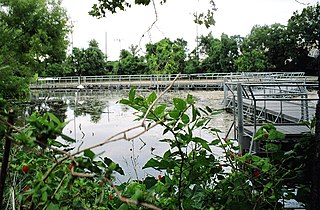
San Marcos Springs is the second largest natural cluster of springs in Texas. The springs are located in the city of San Marcos, Texas, about 30 miles (48 km) southwest of Austin and 46 miles (74 km) northeast of San Antonio.
The San Marcos gambusia is a likely extinct species of Gambusia from the family Poeciliidae that was found only in the San Marcos Springs of Central Texas. The fish has not been seen since 1983. The specific name of this fish honors the American ichthyologist George S. Myers (1905–1985).

The Devils River minnow is a species of ray-finned fish in the family Cyprinidae. The minnow coexists with other closely related species and other cyprinids in the range of northern Mexico and southern Texas.

The Comanche Springs pupfish is a species of pupfish in the family Cyprinodontidae. It is endemic to Texas, and is now found only in spring-fed pools near Balmorhea, a small town in West Texas.

The Louisiana pearlshell, Margaritifera hembeli, is a rare species of bivalve mollusk in the family Margaritiferidae. This freshwater mussel is native to Louisiana in the United States, and was previously present also in Arkansas. It grows to a length of about 10 cm (4 in) and lives on the sand or gravel stream-bed in riffles and fast flowing stretches of small streams. Its life cycle involves a stage where it lives parasitically inside a fish. This mollusk is sensitive to increased sedimentation and cannot tolerate impoundments. Because of its limited range and its population decline, the International Union for Conservation of Nature has rated this mollusk as being "critically endangered".
Stygobromus hayi is a rare species of crustacean known by the common name Hay's spring amphipod. It is endemic to the District of Columbia in the United States, where it occurs only in Rock Creek, a tributary of the Potomac River. It is a federally listed endangered species, is listed as Endangered on the IUCN Red List, and as Critically Imperiled by NatureServe.
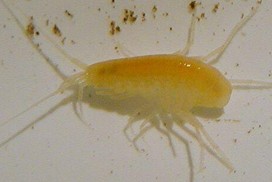
Stygobromus pecki, the Peck's cave amphipod, is a rare species of crustacean found in four cavern areas of southwestern Texas in the United States. It is a federally listed endangered species in the United States and is also listed as Endangered on the IUCN Red List. Because of the species' limited geographical distribution, not much information on S. pecki is known. As of April 2022, there is no available 5-year review, Species Status Assessment, or recovery plan for the species. However, the Edwards' Aquifer Habitat Conservation Program (EAHCP), with the support of the U.S. Fish and Wildlife Service (UFWS), has been attempting to further study and promote conservation of S. pecki.
The Coffin Cave mold beetle, also known as the Inner Space Caverns mold beetle, is a small insect that is only found in caves. They are very small at 2.60–2.88 mm (0.102–0.113 in) and lack any form of eyes. They are found exclusively in caves in a single county in Texas, Williamson County. The United States Fish and Wildlife Service considers the Coffin Cave mold beetle to be an endangered species. Threats facing this species include urbanization.
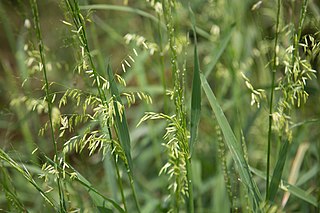
Zizania texana is a rare species of grass known by the common name Texas wild rice. It is endemic to Texas, where it is found only on the upper San Marcos River in Hays County. It is threatened by the loss and degradation of its habitat. It is a federally listed endangered species of the United States.

Stygoparnus is a monotypic genus of beetles containing the single species Stygoparnus comalensis, which is known by the common name Comal Springs dryopid beetle. This rare beetle is endemic to Texas in the United States, where it is known from two springs. It is a federally listed endangered species of the United States.

The Tooth Cave ground beetle, Rhadine persephone, is an endemic beetle that lives only in karst caves in Texas. They are arthropods of the family Carabidae. The United States government considers these beetles endangered because they are only found in a single cave system. If these caves are destroyed, this beetle will likely go extinct. The cave system is currently threatened by pollution, urban development, and invasion by fire ants.
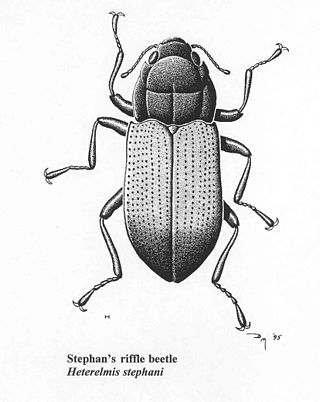
Heterelmis stephani was a rare species of aquatic beetle known by the common name Stephan's riffle beetle. It was endemic to Arizona in the United States, where it occurred in the Santa Rita Mountains before being declared presumed extinct. It was brown in color with small black dots on its wings.
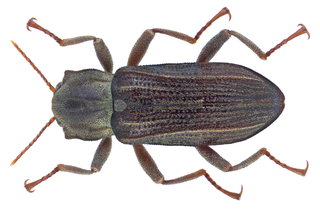
Elminae is a subfamily of riffle beetles in the family Elmidae. There are at least 120 genera and more than 1,300 described species in Elminae.

Elmini is a tribe of riffle beetles in the family Elmidae. There are more than 90 genera and 1,200 described species in North America.
Dubiraphia is a genus of riffle beetles in the family Elmidae. There are about 11 described species in Dubiraphia.
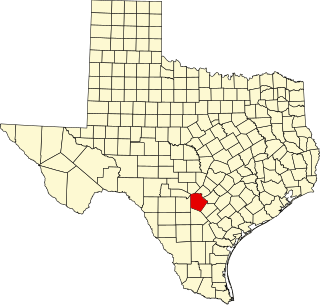
Rhadine infernalis is a species of troglobitic beetle of the family Carabidae. They are endemic to the county of Bexar, Texas. Within this county, R. infernalis has been found in 39 caves. There are 2 named subspecies of R. infernalis: R. infernalis infernalis and R. infernalis ewersi. There is a third possible subspecies that has not been officially described. R. infernalis was classified in 2000 as endangered under the IUCN Endangered Species Act of 1973, along with 8 other karst invertebrates in the same region. It has the widest known range of the endangered karst invertebrates.

















